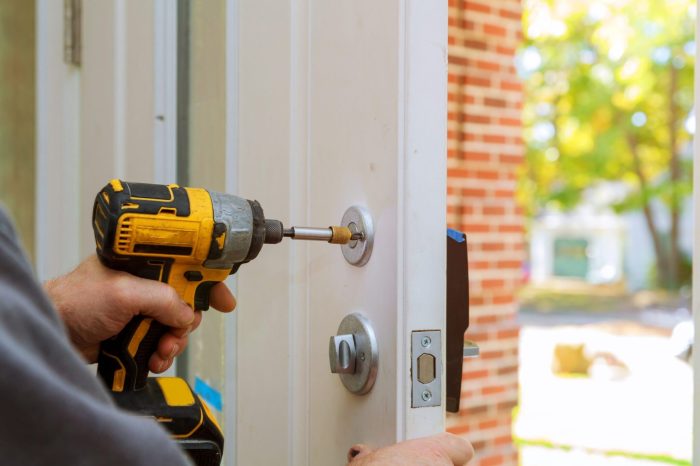How One Architecture Firms Manage Building Envelope Risks
Exploring the realm of architecture firms and their approach to handling building envelope risks unveils a world of challenges and innovative solutions. From identifying potential risks to successful collaboration efforts, the journey of managing building envelope risks is both intricate and essential.
Understanding Building Envelope Risks
Building envelope risks refer to potential dangers or vulnerabilities associated with the exterior elements of a building, including the walls, roof, windows, and doors. These risks can impact a structure's integrity, performance, and energy efficiency, making them crucial considerations for architecture firms.Examples of common building envelope risks faced by architecture firms include water infiltration, air leakage, thermal bridging, and inadequate insulation.
Water infiltration can lead to mold growth, rot, and structural damage, while air leakage can compromise indoor air quality and energy efficiency. Thermal bridging can cause heat loss or gain, impacting the building's overall energy performance, and inadequate insulation can result in discomfort for occupants and increased energy costs.Effectively managing building envelope risks is essential to ensure the longevity and sustainability of a building.
By addressing these risks proactively during the design and construction phases, architecture firms can enhance the building's performance, durability, and occupant comfort. Implementing proper moisture control strategies, air barrier systems, insulation solutions, and thermal breaks can help mitigate potential risks and improve the overall quality of the building envelope.
Strategies for Identifying Building Envelope Risks
When it comes to managing building envelope risks, identifying potential issues early on is crucial. Architecture firms employ various strategies to detect these risks before they escalate into major problems. Utilizing technology and conducting regular inspections are key components in this process.
Methods Used by Architecture Firms
- Visual Inspections: Architects and engineers often conduct visual inspections of the building envelope to look for signs of damage, deterioration, or other issues.
- Moisture Testing: Using specialized equipment, firms can perform moisture testing to identify areas of water infiltration or leakage.
- Thermal Imaging: Thermal imaging technology can help detect temperature differences that may indicate insulation or moisture problems within the building envelope.
Role of Technology in Identifying Risks
- Building Information Modeling (BIM): BIM software allows architects to create digital representations of the building, helping them identify potential envelope risks early in the design phase.
- Drones: Drones equipped with cameras can capture high-resolution images of the building envelope, providing a detailed view of areas that are difficult to access.
- Sensors and Monitoring Systems: Installing sensors and monitoring systems can help detect changes in the building envelope, such as humidity levels or air infiltration.
Significance of Regular Inspections
Regular inspections play a vital role in early risk identification, as they allow architects to spot issues before they worsen. By conducting routine checks, architecture firms can address small problems promptly, preventing them from escalating into costly repairs or structural damage.
Importance of Collaboration in Managing Building Envelope Risks
Effective collaboration among architects, engineers, and contractors plays a crucial role in managing building envelope risks. By working together seamlessly, these professionals can identify potential issues, develop solutions, and ensure the successful implementation of risk mitigation strategies.
Role of Collaboration in Risk Management
Collaboration allows architects to design building envelopes that are not only aesthetically pleasing but also structurally sound. Engineers can provide valuable insight into the technical aspects of the design, ensuring that it meets safety standards and performance requirements. Contractors, on the other hand, can offer practical expertise during the construction phase, helping to prevent or address any issues that may arise.
Importance of Effective Communication
Clear and open communication is key to mitigating building envelope risks. When all stakeholders are transparent about their concerns, ideas, and challenges, it becomes easier to address potential issues before they escalate. Regular meetings, progress updates, and detailed documentation are essential to ensuring that everyone is on the same page throughout the project.
Examples of Successful Collaborative Efforts
One notable example of successful collaboration in managing building envelope risks is the Shard in London. Architects, engineers, and contractors worked closely together to design and construct this iconic skyscraper, which features a unique glass façade. By pooling their expertise and resources, they were able to overcome various challenges and deliver a high-quality, visually striking building.Another example is the Aqua Tower in Chicago, where collaboration between the design team and construction crew resulted in an innovative and award-winning building envelope.
Through effective communication and coordination, they were able to address complex structural requirements and create a distinctive exterior that enhances the building's overall aesthetic appeal.
Final Thoughts
As we conclude our discussion on how architecture firms manage building envelope risks, it becomes evident that proactive measures, strategic collaborations, and efficient mitigation techniques play a pivotal role in ensuring the structural integrity and longevity of buildings. By embracing these practices, architecture firms can navigate the complexities of building envelope risks with confidence and expertise.
Expert Answers
How can architecture firms stay updated on the latest building envelope risk management techniques?
Architecture firms can stay informed by attending industry conferences, participating in workshops, and engaging with specialized consultants who offer insights into cutting-edge risk management strategies.
What role does insurance play in mitigating building envelope risks for architecture firms?
Insurance serves as a financial safety net for architecture firms, providing coverage in case of unforeseen events or risks associated with the building envelope. It helps mitigate potential financial losses and liabilities.
Are there software tools specifically designed to assist architecture firms in identifying building envelope risks?
Yes, there are specialized software tools that utilize data analytics and predictive modeling to assess and identify potential building envelope risks. These tools enhance the accuracy and efficiency of risk identification processes.




